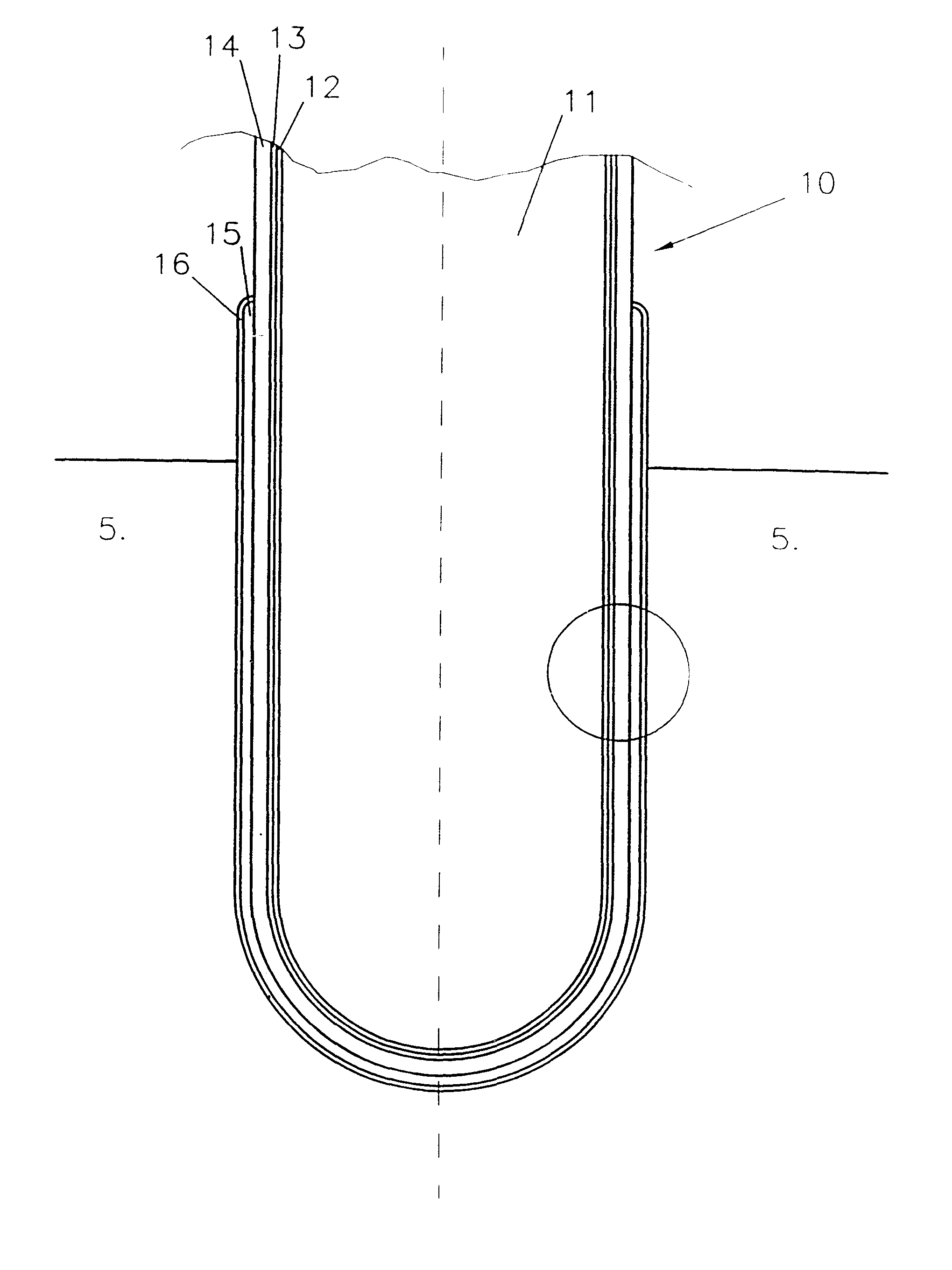Cells for the electrowinning of aluminium having dimensionally stable metal-based anodes
a cell and metal-based anode technology, applied in the field of anodes, can solve the problems of inability to avoid or greatly improve, the life of carbon anodes is very short, and the frequent substitution of anodes in the cell is still a clumsy and unpleasant operation, so as to reduce the pollution of carbon anodes and increase the life of anodes
- Summary
- Abstract
- Description
- Claims
- Application Information
AI Technical Summary
Benefits of technology
Problems solved by technology
Method used
Image
Examples
example 2
An anode was made by coating by electro-deposition a structure in the form of an rod having a diameter of 12 mm consisting of 74 weight % nickel, 17 weight % chromium and 9 weight % iron, such as Inconel.RTM., first with a nickel layer about 200 micron thick and then a copper layer about 100 micron thick.
The coated structure was heat treated at 1000.degree. C. in argon for 5 hours. This heat treatment provides for the interdiffusion of nickel and copper to form an intermediate layer. The structure was then heat treated for 24 hours at 1000.degree. C. in air to form a chromium oxide barrier layer on the core structure and oxidising at least partly the interdiffused nickel-copper layer thereby forming the intermediate layer.
A further layer of a nickel-iron alloy consisting of 30 weight % nickel and 70 weight % having a thickness of about 0.5 mm was then applied on the interdiffused nickel copper layer by plasma spraying.
The alloy layer was then pre-oxidised at 1100.degree. C. for 6 ho...
example 3
Example 2 can repeated by replacing the Inconel.RTM. core structure by a nickel-plated copper body which is coated with a chromium layer and oxidised to form a chromium oxide oxygen barrier which can be covered with an interdiffused nickel-copper intermediate layer and the electrochemically active hematite-based outer layer.
PUM
| Property | Measurement | Unit |
|---|---|---|
| weight % | aaaaa | aaaaa |
| weight % | aaaaa | aaaaa |
| weight % | aaaaa | aaaaa |
Abstract
Description
Claims
Application Information
 Login to View More
Login to View More - R&D
- Intellectual Property
- Life Sciences
- Materials
- Tech Scout
- Unparalleled Data Quality
- Higher Quality Content
- 60% Fewer Hallucinations
Browse by: Latest US Patents, China's latest patents, Technical Efficacy Thesaurus, Application Domain, Technology Topic, Popular Technical Reports.
© 2025 PatSnap. All rights reserved.Legal|Privacy policy|Modern Slavery Act Transparency Statement|Sitemap|About US| Contact US: help@patsnap.com


